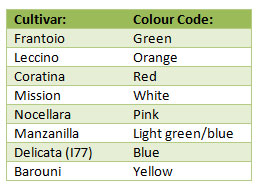Information & Facts
Olive Cultivars
Olives and olive oils are fast becoming a staple of South African dinner tables and kitchens but, as with most culinary treats, all things are not as equal as they seem. This country’s rich soil has become home to several fine varieties – or ‘cultivars’ as they are known – of fruit yielding olive tree. These produce many of the high quality oils and table olives you can find on supermarket shelves right now, and below is a rough guide to some of the most common olive cultivars found in South Africa.
What is Extra Virgin Olive Oil (EVOO)
Olive oil simply put, is juice from a fruit. Virgin is the accepted term for purity. 'Extra' Virgin is the first purist juice obtained from the fruit of olive trees.
Olive oils described as ‘virgin’ are those that have been obtained from the original fruit without having been synthetically treated. Once the olives have been picked, pressed, and washed, no other process has taken place other than decantation, and centrifugation to extract the oil, and filtration.
The best quality of olive oil available is described as ‘extra virgin’.
Extra Virgin Olive Oil extra virgin is the highest quality and most flavourful olive oil classification. In chemical terms it is escribed as having a free acidity, expressed as oleic acid, of not more than 0.8 grams per 100 grams and a peroxide value of less than 20 milliequivalent O2. It must be produced entirely by mechanical means without the use of any solvents, and under temperatures that will not degrade the oil (less than 86°F, 30°C).
For an oil to qualify as “extra virgin” the oil must also pass both an official chemical test in a laboratory and a sensory evaluation by a trained tasting panel recognized by the SA Olive Association. The olive oil must be found to be free from defects while exhibiting some fruitiness.
Since extra virgin olive oil is simply pressed fruit juice without additives, the factors influencing its quality and taste include the varieties of olives used, the terroir and the countless decisions, production practices and the dedication of the producer.
There are many different kinds of olives, or varietals from which oil can be produced, and each brings a unique flavour and quality to the oil. It is the variety of olive, along with the maturity of the fruit, that contributes most to the flavour of the oil.




